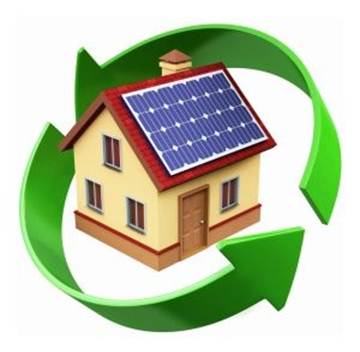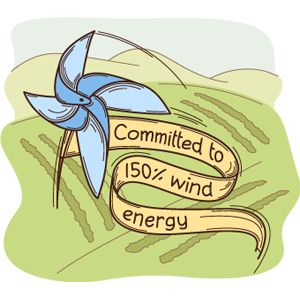Introducing ESCO Models
by Mark Row
 Breakthroughs in Energy Efficiency
Breakthroughs in Energy Efficiency
The never ending struggle for improved energy efficiency, increased use of renewable energy and lower carbon footprint has not circumvented UK, especially London area, due to the fact that 8% of carbon emissions in the UK are sourced from London. This is why the Mayor of London has passed the Energy Strategy in 2004, setting out goals in regard to the improved energy efficiency and alternative energy supplies on the long run, whereas the basic idea is to provide significant decrease of CO2 emissions up to the 2050. Besides, the Mayor has passed the Climate Change Action Plan in 2007 which sets an even bolder goal of cutting CO2 emissions by 60% until 2025. The project is based on the fact that even 56% of CO2 emissions in London derive from gas-fired heating, that only negligible percentage of heat comes from energy efficient heating schemes, and that more than half of homes in London do not have adequate solid walls insulation, why it’s main goal is to minimize the harmful emissions affecting climate changes and provide sustainable energy sources. Since the entire concept is closely connected with the special-purpose companies, this article shall be dedicated to introducing ESCO models.
What is an ESCO?
An ESCO stands for an energy service company, which however cannot be precisely defined so that the given definition would be generally acceptable, regardless of the region and country it is used in. Namely, different countries throughout the world have developed different models that are all energy efficiency oriented and operate under different rules and schemes. However, in order of understanding the basic concept, an ESCO can be defined as a special-purpose company which can take various forms from limited liability or shareholder company established under the Companies Act to a provident or industrial society, trust or even an incorporated entity.
Basically, a customer interested in improving energy efficiency and the quality of energy services enters into a contract with an ESCO (usually referred to as the EPC or the energy performance contracting) which establishes certain incentives in regard to the energy efficiency, resulting in the fact that the contractor is financed by the foreseen savings (money or otherwise), guaranteed under the ESCO model. If the savings are not realized in the contracted period, the contractor looses the right to compensation. For example, if switching to some alternative energy sources or adding insulation to external walls does not result in the foreseen money savings (usually given in percent) the contractor will not be entitled to compensation of expenses deriving from executing the contracted work (adding insulation, installing necessary equipment etc).

Apart from the pointed out differences, an ESCO can take various forms, with or without a public partnership and the involvement of private sector in regard to the provided services and financing. It can be established by a public body and used to improve energy efficiency throughout a particular incentive or a group of incentives by delivering different energy services. On the other hand, it can also be solely in private ownership and conclude a contract with the public organization (usually through public procurement and tender procedure) with or without the guarantee in regard to the expected energy and money savings. These contracts, either concluded with the public body or a single customer (in regard to the specific project) are usually a long term contracts whereas the contracted benefits are to be realized in the following 5-20 years, depending on the magnitude and complexity of the project.
What comes as a conclusion is that an ESCO model can be more or less public driven, with a limited or more important role and involvement of the private sector (in design, build or entire operation by the private sector) with or without the guarantees in regard to the foreseen savings, but with the same basic goal of improving energy efficiency, energy savings and reducing harmful emissions.
ESCO Models in Practice
As upper mentioned, ESCO models differ, not only between different countries throughout the world, but also between different regions within the UK. This resulted in different schemes and projects developed in the UK, with different organization and different operating mechanisms.

- One example is the Aberdeen Scheme which operates through an arm’s length company (basically an ESCO company) undertaking energy-efficiency driven measure, with only a limited private sector involvement in the project, whereas the Energy Saving Trust Community Energy Program provided a grant while other necessary funds were provided by the City Council, on the annual level and through a term loan. The mutual relations between the Council and the arm’s length company were regulated through a framework agreement which included the financing, the internal organization structure of the company and the work to be carried out.
- Another example is the Southampton City Council and private company Utilicom Ltd partnership (read more here), which resulted in the joint formation of the Southampton Geothermal Heating Company Limited where the general idea was to release the Council from the operating risk, whereas the company established was in sole ownership of the Utilicom Ltd who managed all the necessary work and the Council on its part provided necessary land and other resources. The contracted activities have reduced the monthly utility bills for around 25%.
The Titanic Mill in the West Yorkshire is another project worth mentioning, which included complete refurbishment of the local mill by cooperation and partnership of the Lowry Renaissance Limited and the Energy for Sustainable Development Limited and Kirklees Metropolitan Borough Council. The Titanic Mill energy scheme included a number of different measures which were designed to improve the energy efficiency including low energy appliances, adequate insulation, ventilating and windows replacement. Again, in order of providing adequate maintenance and assets replacement over the years, the project involved an ESCO establishment which would supply electricity, heat and water to the tenants.
To learn more about ESCO models, local insulation schemes and about choosing the right insulation material, read our blog articles. Contact us through our live chat support system or send an email to info@insulationshop.co if you need any help with the insulation products listed at our online insulation shop.

























































































































